By way of context, the curators of the recent exhibition The Forbidden City and the Palace of Versailles explained:
In the 17th and 18th centuries, the Forbidden City in China and the Palace of Versailles in France each stood as the centre of their respective countries’ political, cultural, and artistic life. Despite the vast geographic distance between them, the courts in Beijing and Versailles were keenly curious about one another.
This curiosity led to a series of cultural and technological exchanges.
I’ve visited both of these two palaces and am fascinated by the very different ways they project both hard and soft power.
Earlier this year, I was lucky enough to have a trip to Hong Kong and made time to visit this exhibition.
Here’s my brief photo essay about that visit. The array of artefacts that grew out of the two palaces’ cultural exchanges was simply dazzling. And there was a lot more on display than I could possibly show or write about.
Having worked in the field of cultural relations for much of my life, I found the exhibition captivating.1
Pascal’s mechanical calculator, the Pascaline.
The French mathematician Blaise Pascal (1623-1662) invented the first mechanical calculator in 1642. The Kangxi Emperor had a deep interest in mathematics, and the Qing court began to manufacture localised replicas based on originals brought by missionaries. This one has been adapted for local use. Around the circumference, Chinese numerals from one to nine are engraved in an anticlockwise direction.2
Art and the allure of time
I loved these two screens. According to the curators, they “were likely crafted in Guangdong specifically for the Qing court.” Clocks apparently served as a significant window into European culture for the Qing. The two panels contain a total of four clocks. Can you spot them all?
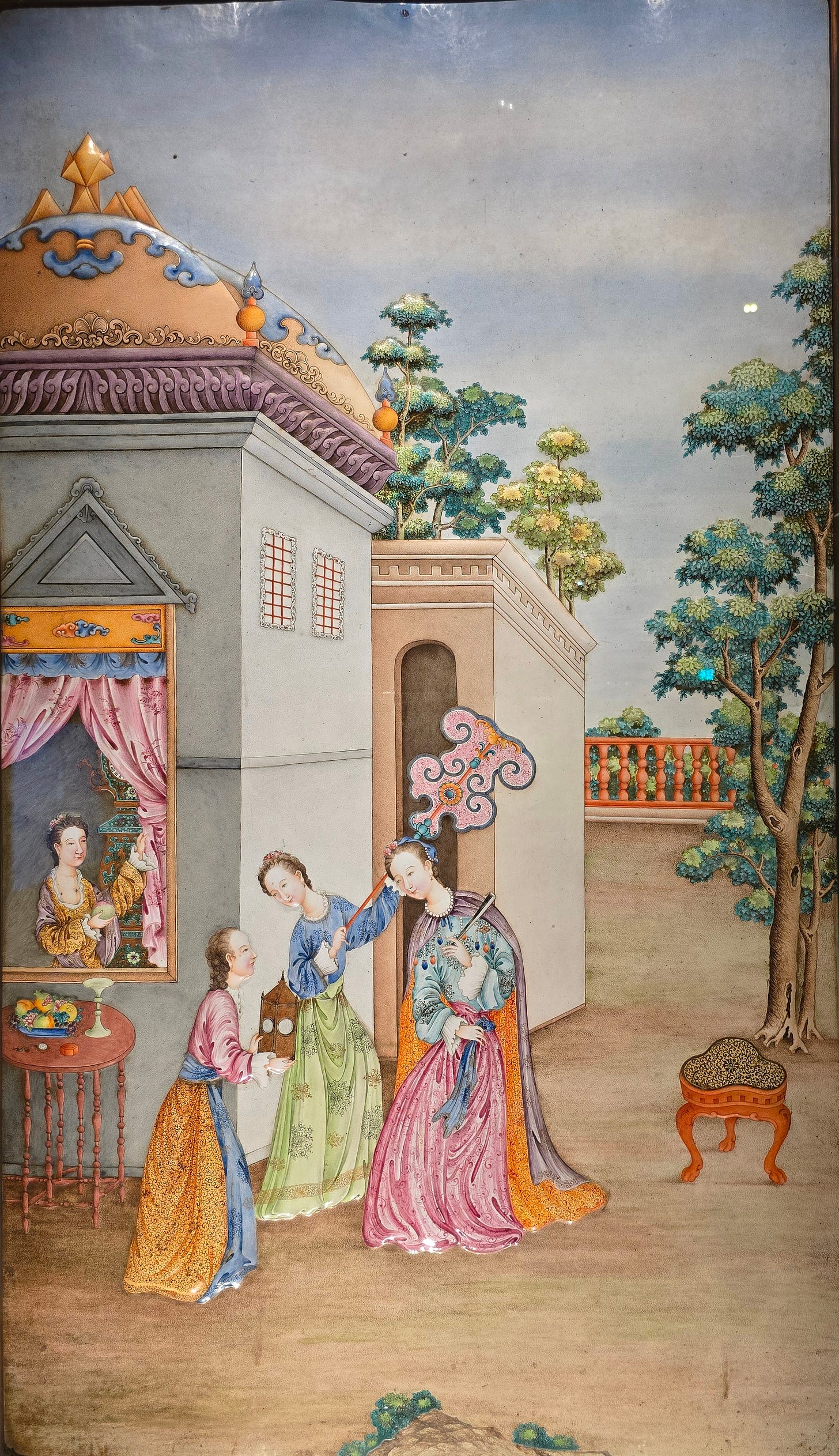
Illustrations of Farming and Weaving
Henri Bertin (1720-1792) was a powerful figure during the reigns of Louis XV (r. 1715-1774) and Louis XVI (r. 1774-1792). Bertin was keen to develop agriculture in France and, impressed by China’s agricultural and technological prowess, believed that France had much to learn from the country. Jesuits at the French mission in Beijing kept him informed of developments in agriculture there.
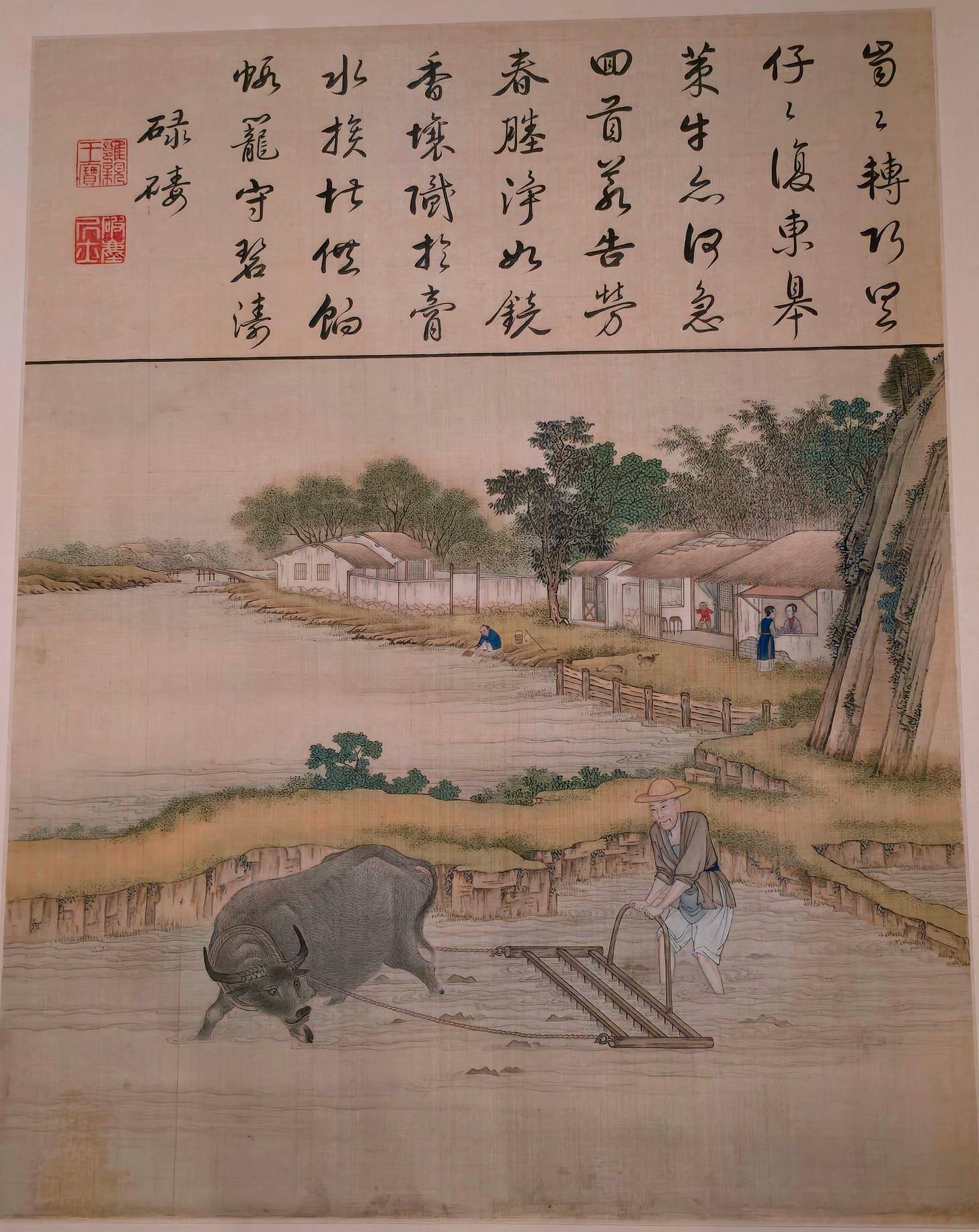
Famille rose
While living in China, two decades ago, I fell in love with the beautiful reds and pinks of the Qing porcelain. It seems the rouge-red glaze, called famille rose, originated in Europe and was brought to China during the late Kangxi period. It was wonderful to see exquisite examples like this one on display:
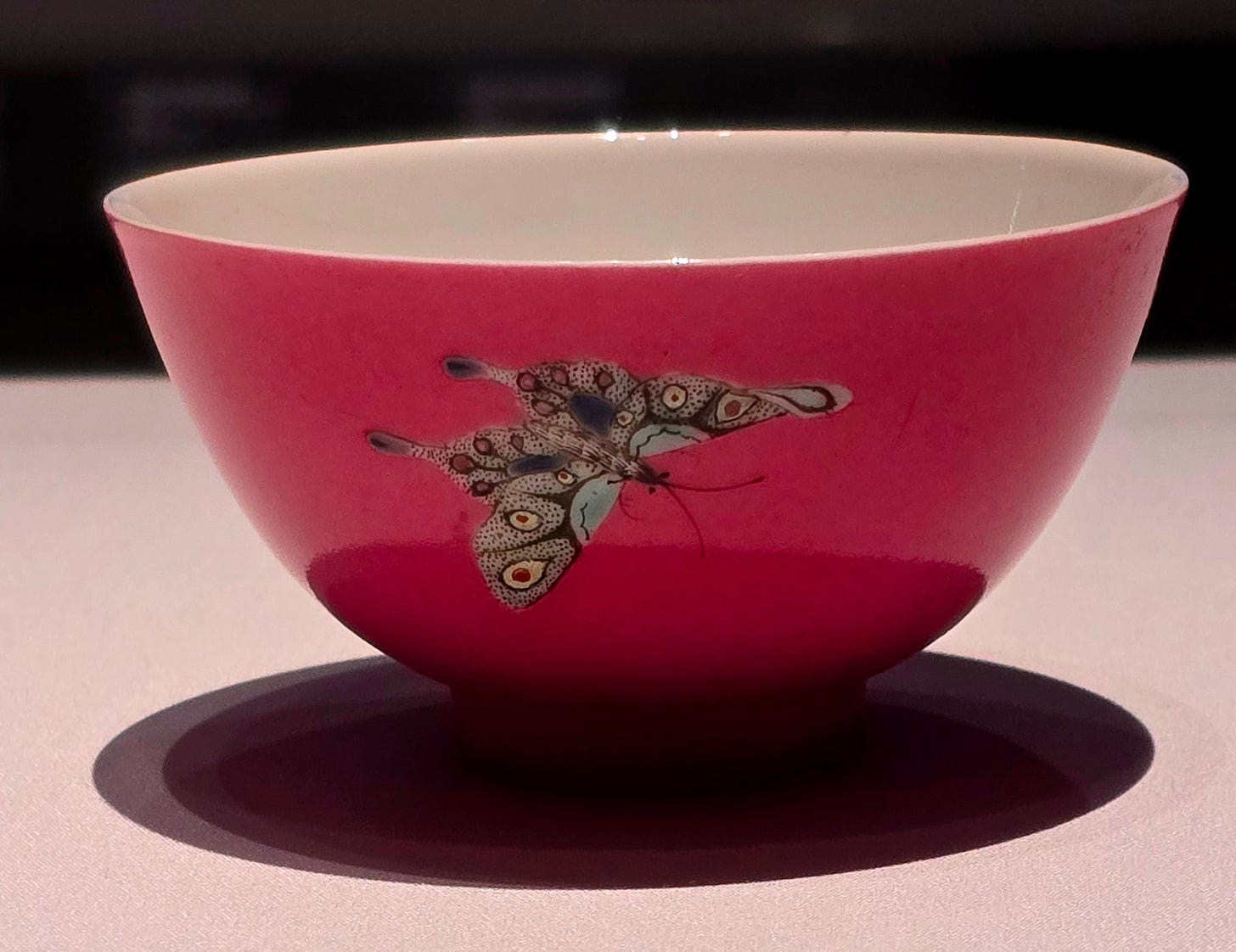
It’ll end in shards: be careful who you build a palace for
I almost jumped back in surprise when I discovered that there had been a Chinoiserie porcelain palace at Versailles: the short-lived Trianon de Porcelaine.
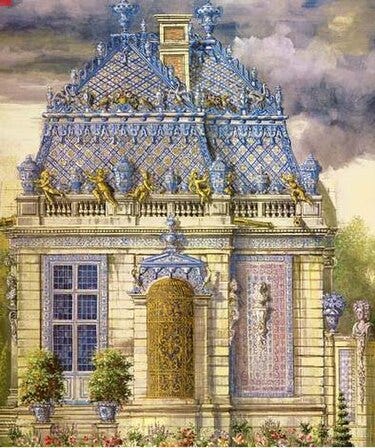
The curators coolly observe that it was built by Louis XIV in 1670 for his mistress Françoise-Athénaïs de Rochechouart (Madame de Montespan, 1640-1707) and that the king’s ardour for her soon waned. Apparently her replacement, Madame de Maintenon, disliked the building. More practically, the decorative tiles were becoming cracked and badly weathered. So the king ordered the building’s demolition.
Madame de Pompadour, China and porcelain
The story of cultural exchange and mutual learning is perhaps best exemplified by ceramics. At the Qing court, Chinese artisans created new decorative pieces using imported enamels and techniques introduced by French Jesuits. China exported ceramics to France in large quantities, and many became prized items in the collections of the French royals.
European porcelain makers, including the French, lagged behind China in their technology. But following discoveries in Meissen and elsewhere in Europe, the French ceramic industry ultimately succeeded in producing true porcelain after the discovery of kaolin clay in the district of Limoges. A few Sèvres pieces even entered the Qing court.
A key figure in the success of Sèvres was Madame de Pompadour (1721–1764), who championed the production of porcelain in France and was herself hugely interested in China.
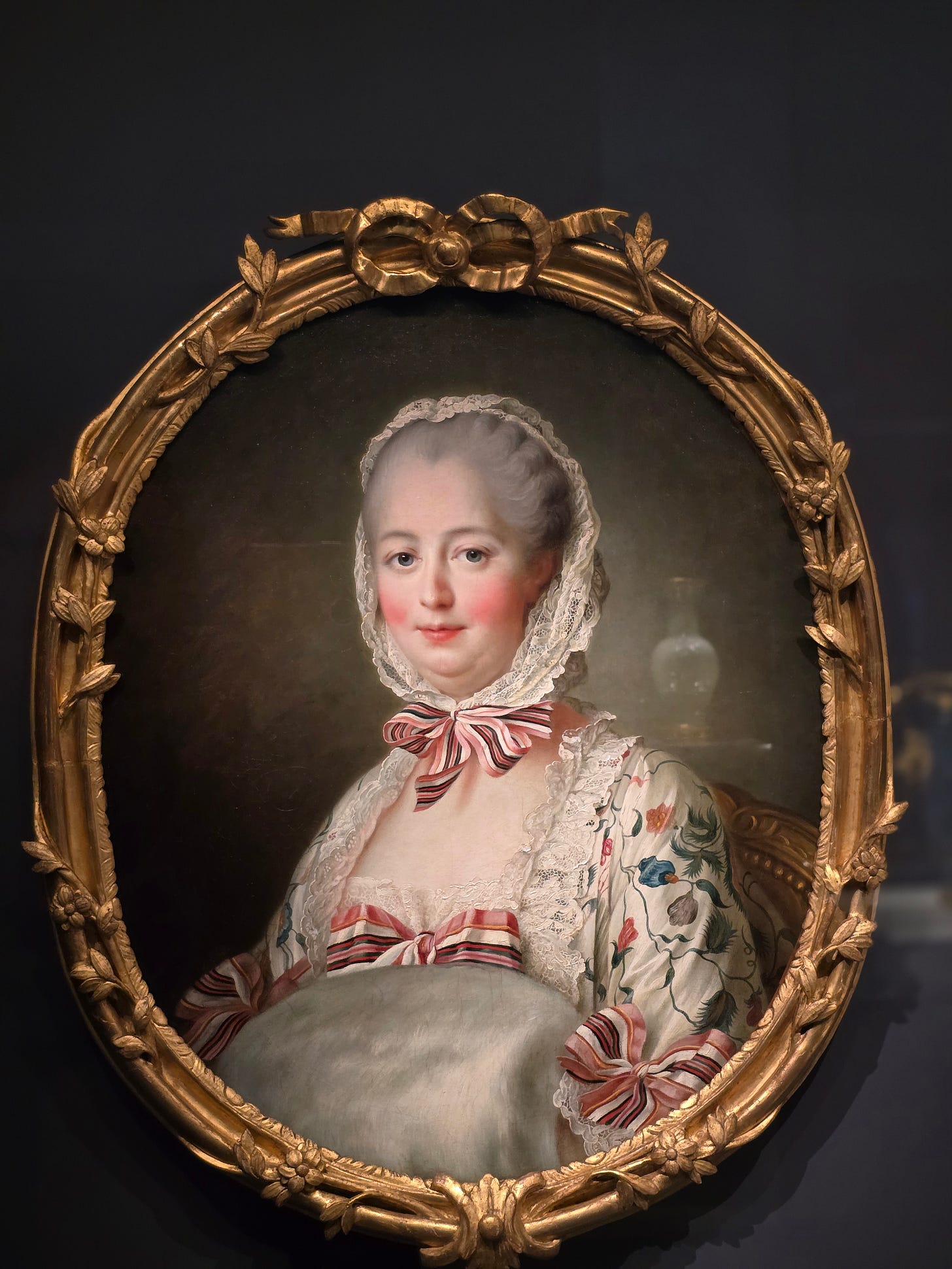
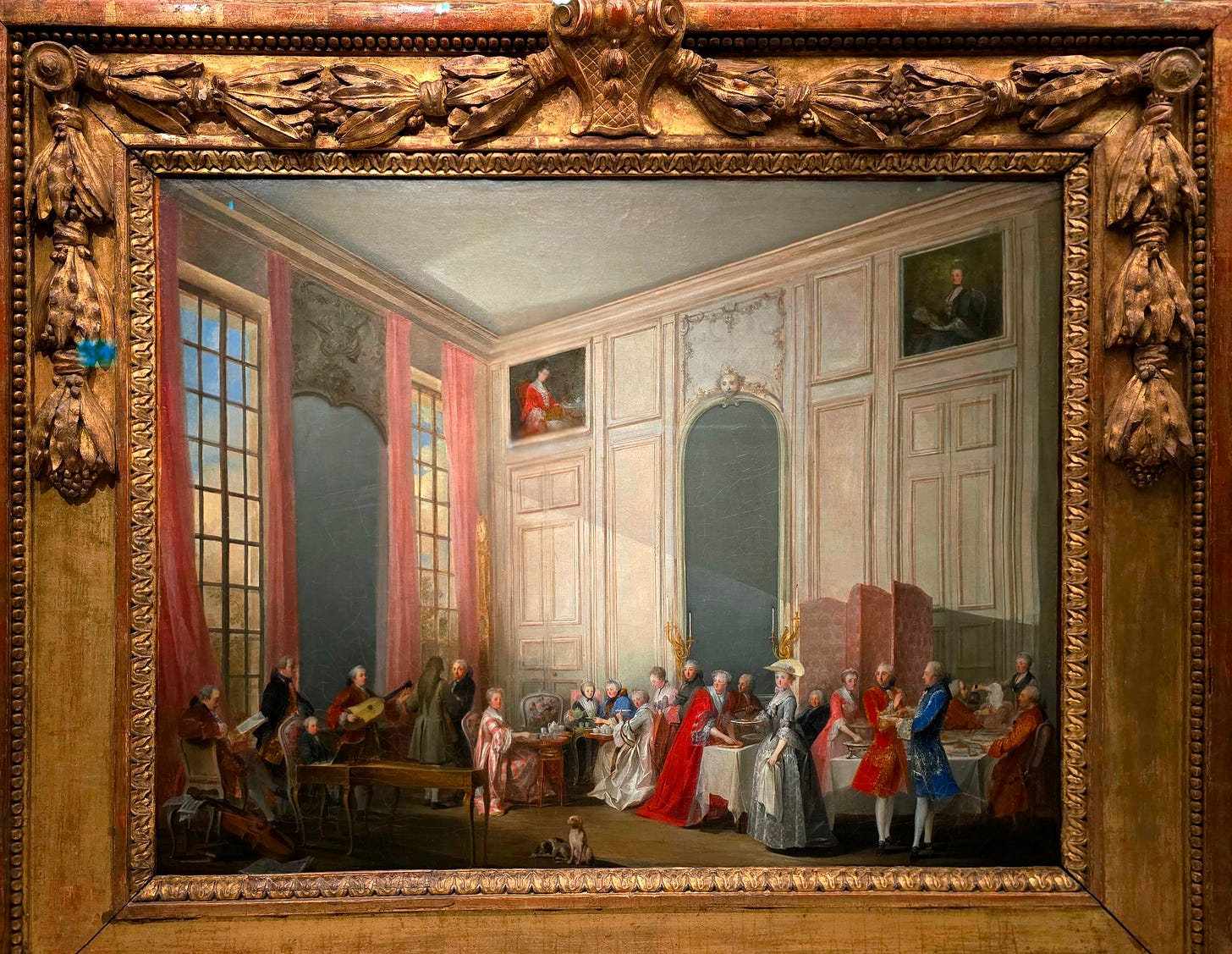
Nanjing Market
Louis XV’s court were fascinated by China: even Queen Marie Leczinska (1703–1768) joined in the fun. She collaborated with other artists to produce this painting of Nanjing Market based on 17th-century Dutch illustrations:
The cultural mirror
Both countries depicted each other in their fine decorative works. Here’s a French writing table showing a scene from China:
And here’s a Chinese goblet depicting Western figures:
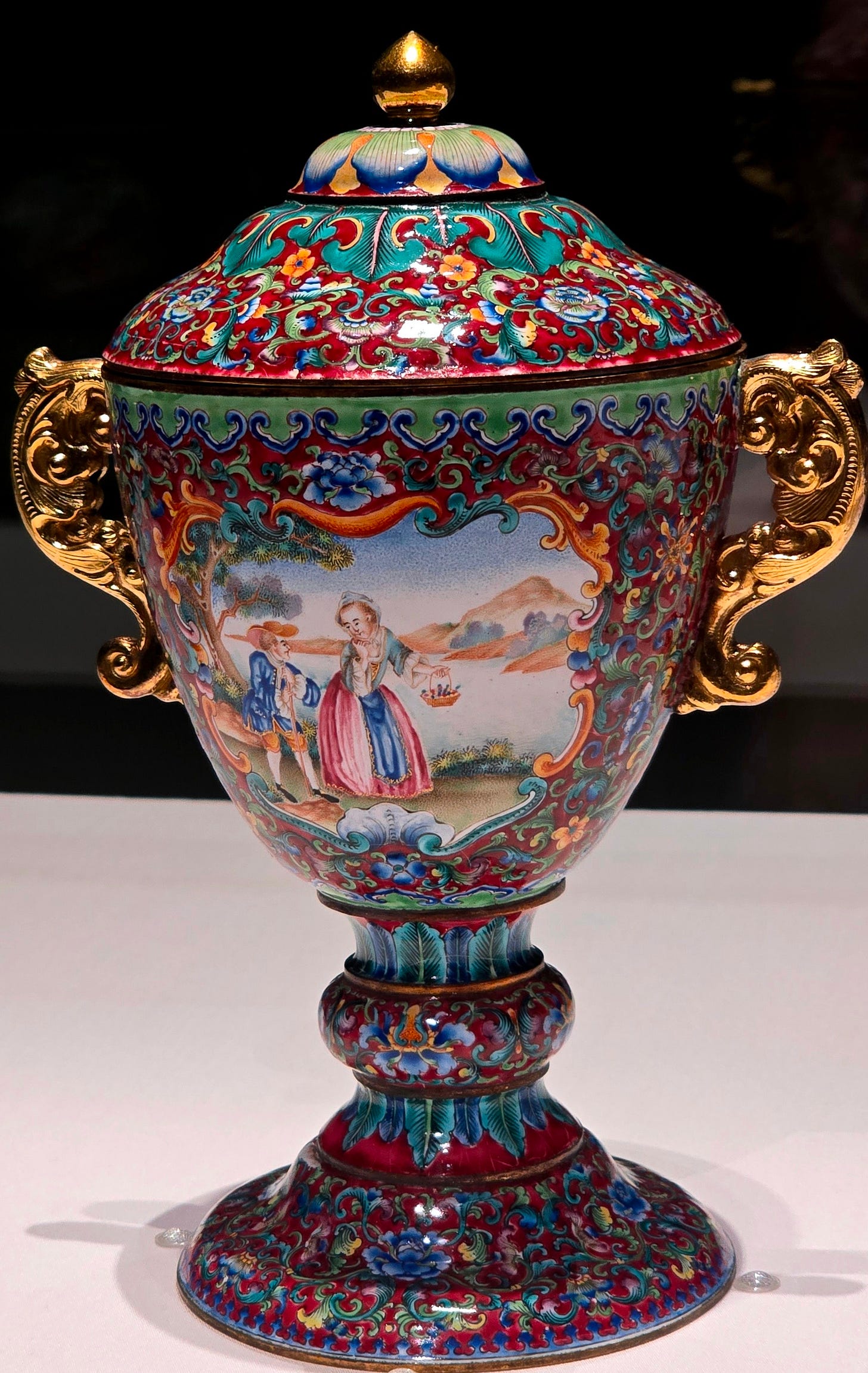
Voltaire, the Qianlong Emperor and the happiness of humankind
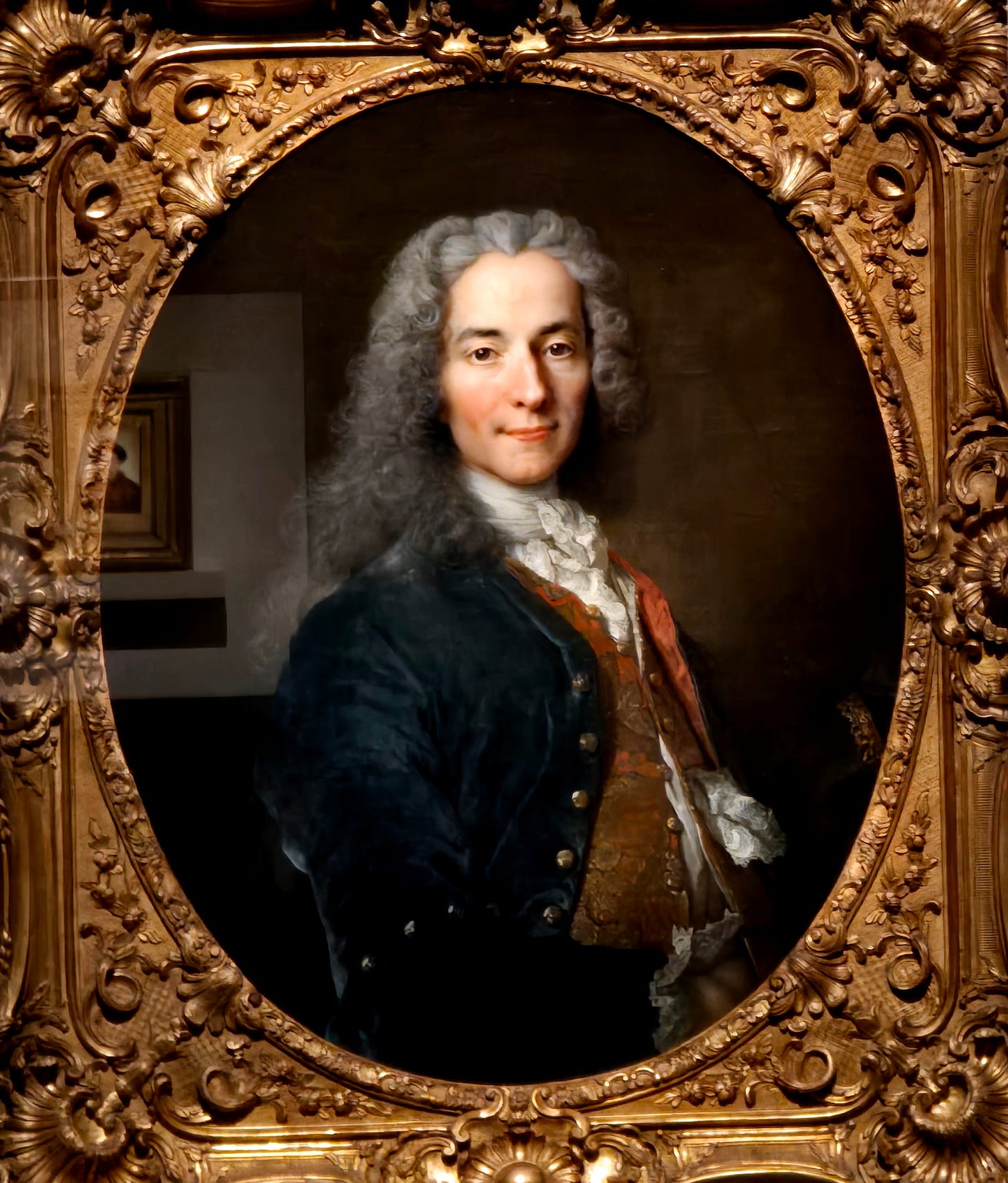
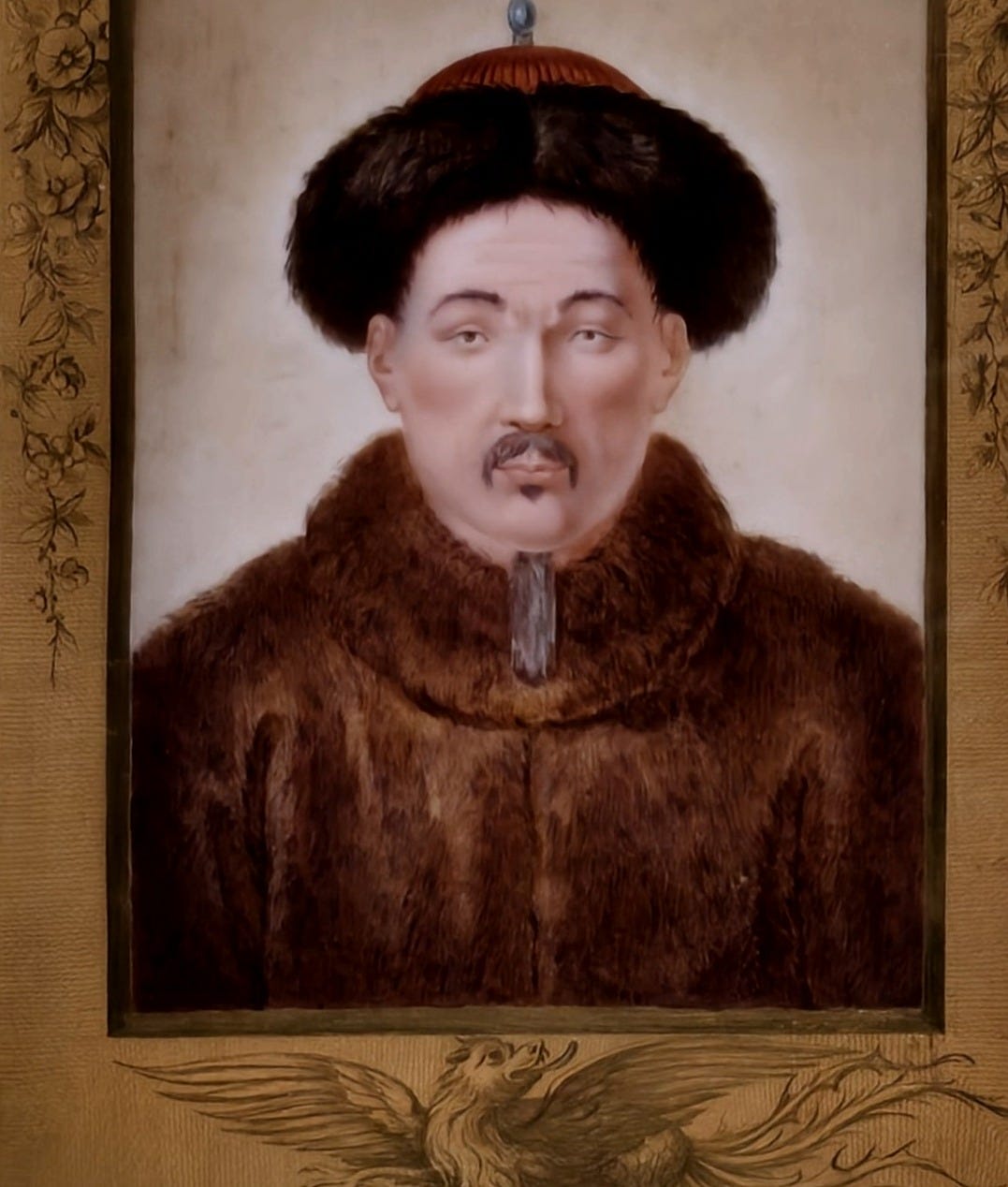
I’ve always regarded the Qianlong emperor (r. 1735-1796) as a smart and deft ruler. At the exhibition, I learnt that Voltaire, a hero of my youth, 3 was also an admirer. According to the curators, Voltaire considered the Qianlong Emperor an enlightened and rational ruler. He saw the Qing state as a benevolent, equitable, and law-abiding one, a possible model for European thinkers and political reformers. I enjoyed the following quote by him and especially what he said about the emperor’s writing, which would be an inspiring goal for any writer:
“Here is an emperor more powerful than Augustus, more revered, busier; who only writes for the instruction and the happiness of humankind” (from Lettres chinoises). 4
If you’re interested in Versailles, the excellent Substack Versailles Century by
is a must-read.All the photos were taken by me.
As a young man, I found it difficult to resist someone who said things like, “It is difficult to free fools from the chains they revere.” Le dîner du comte de Boulainvilliers (1767).
I don’t think Voltaire had in mind the 43,000 poems composed by the emperor; he has a rather mixed reputation as a poet.





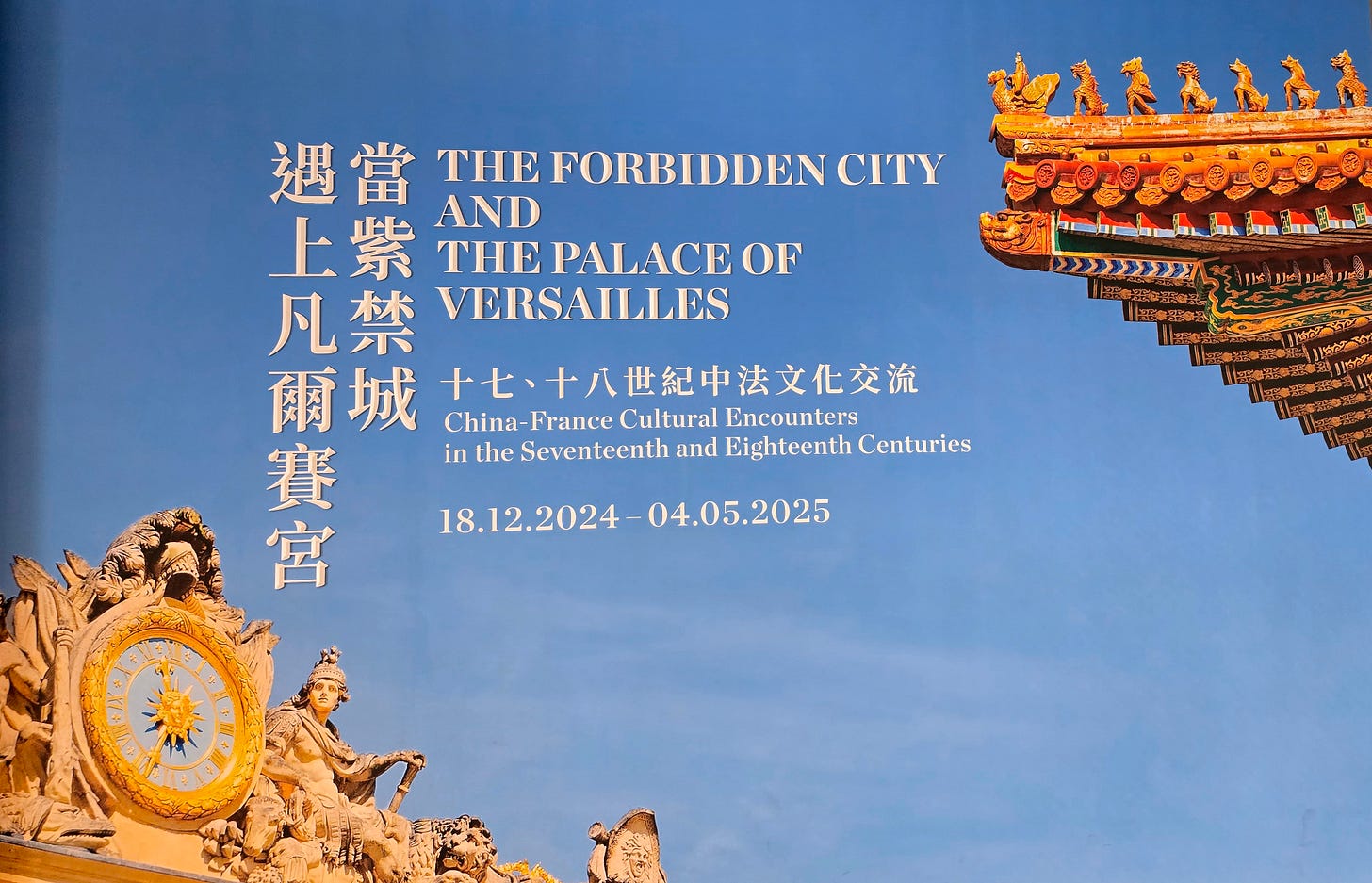
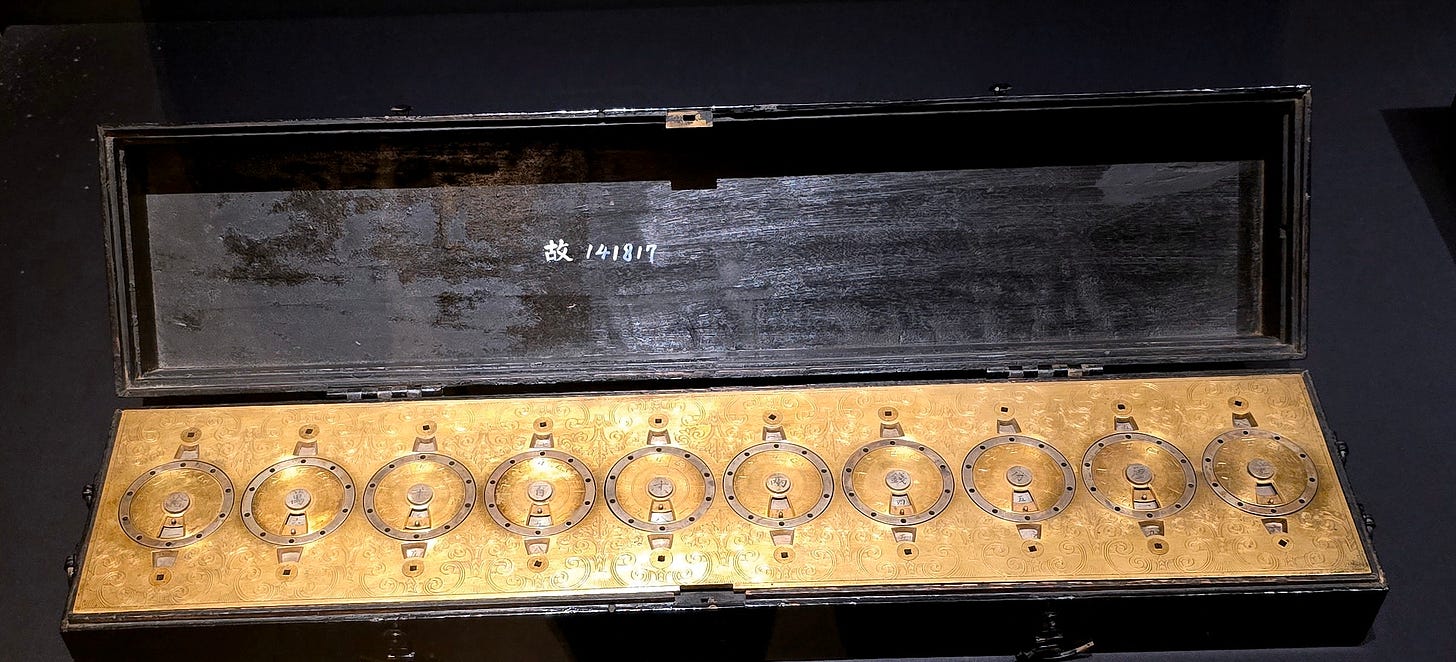
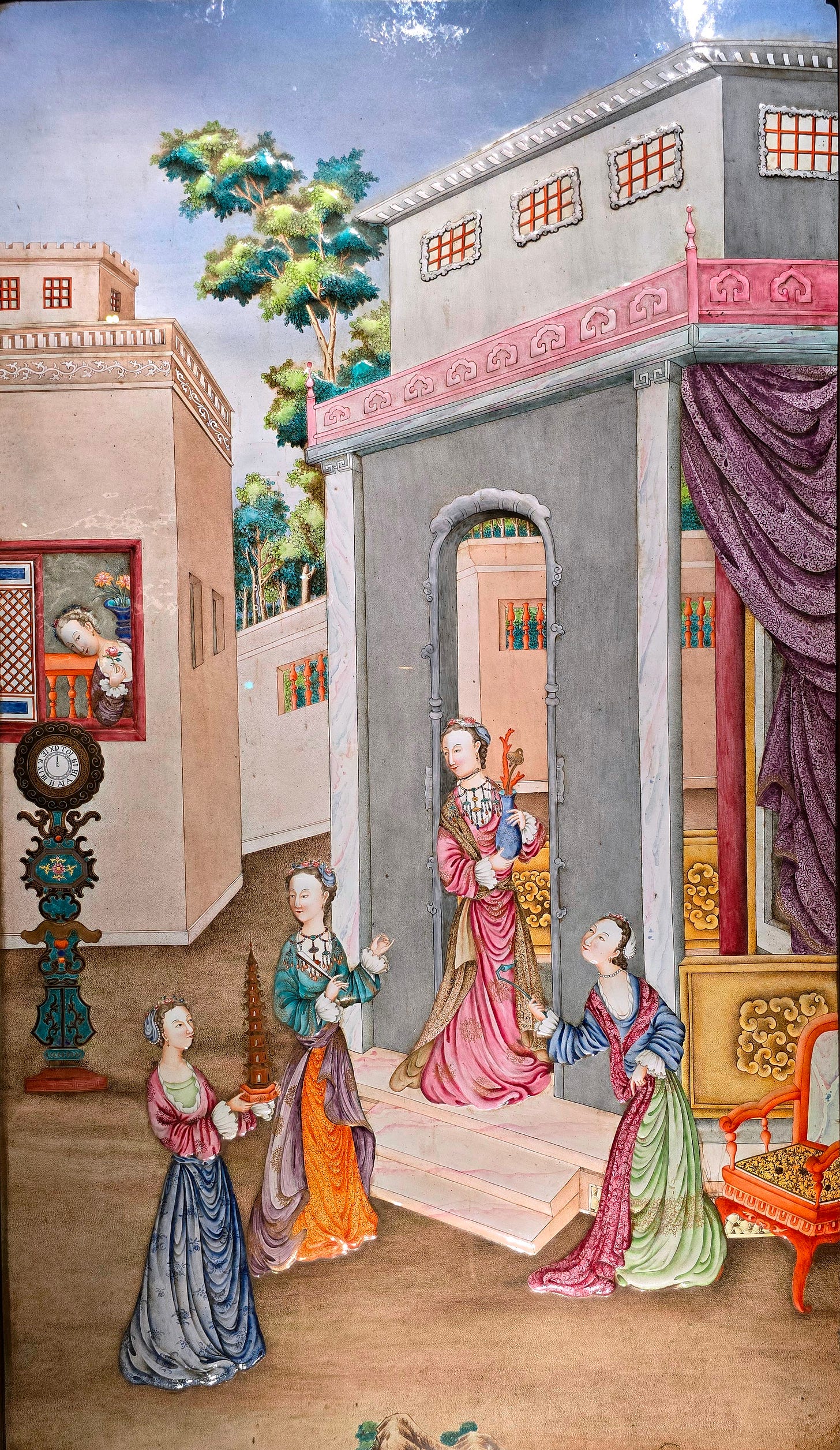
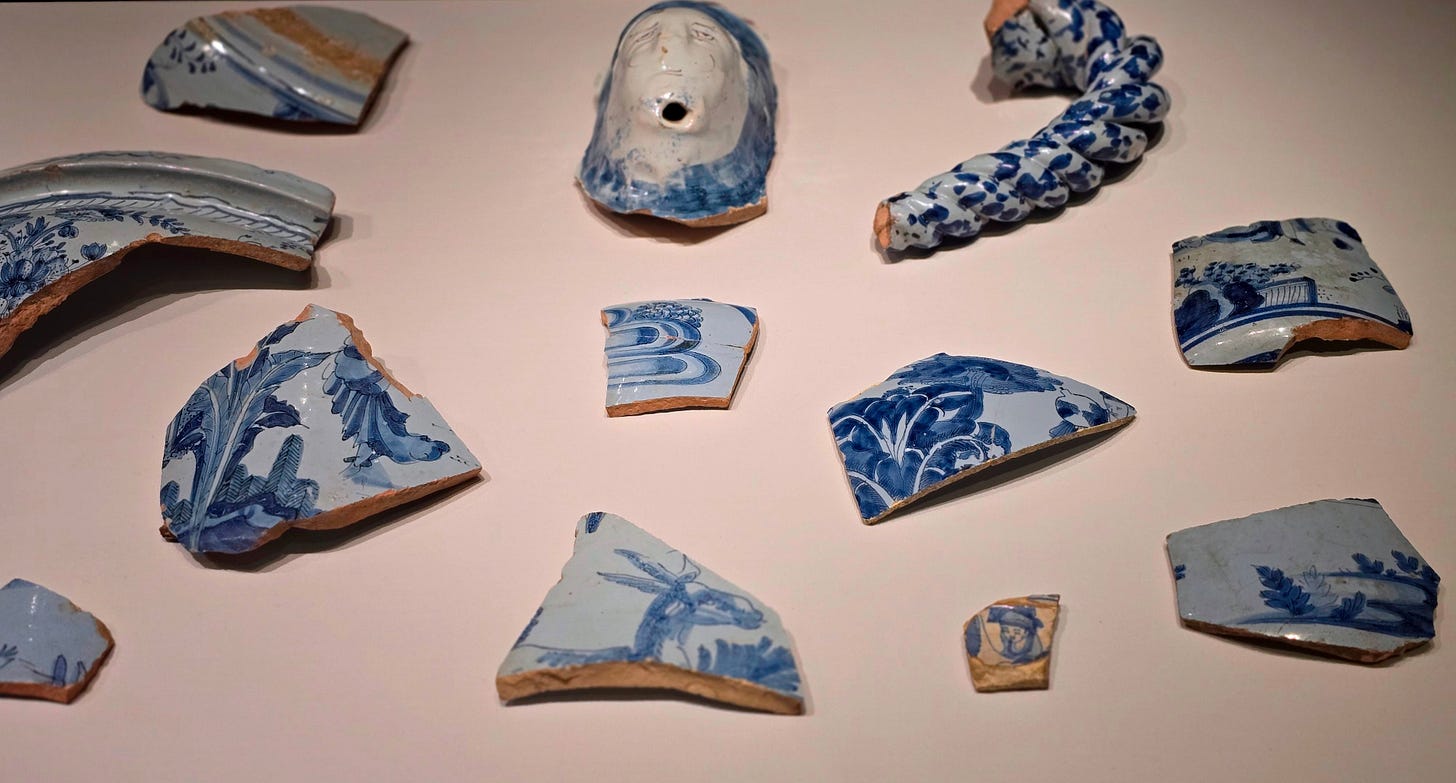
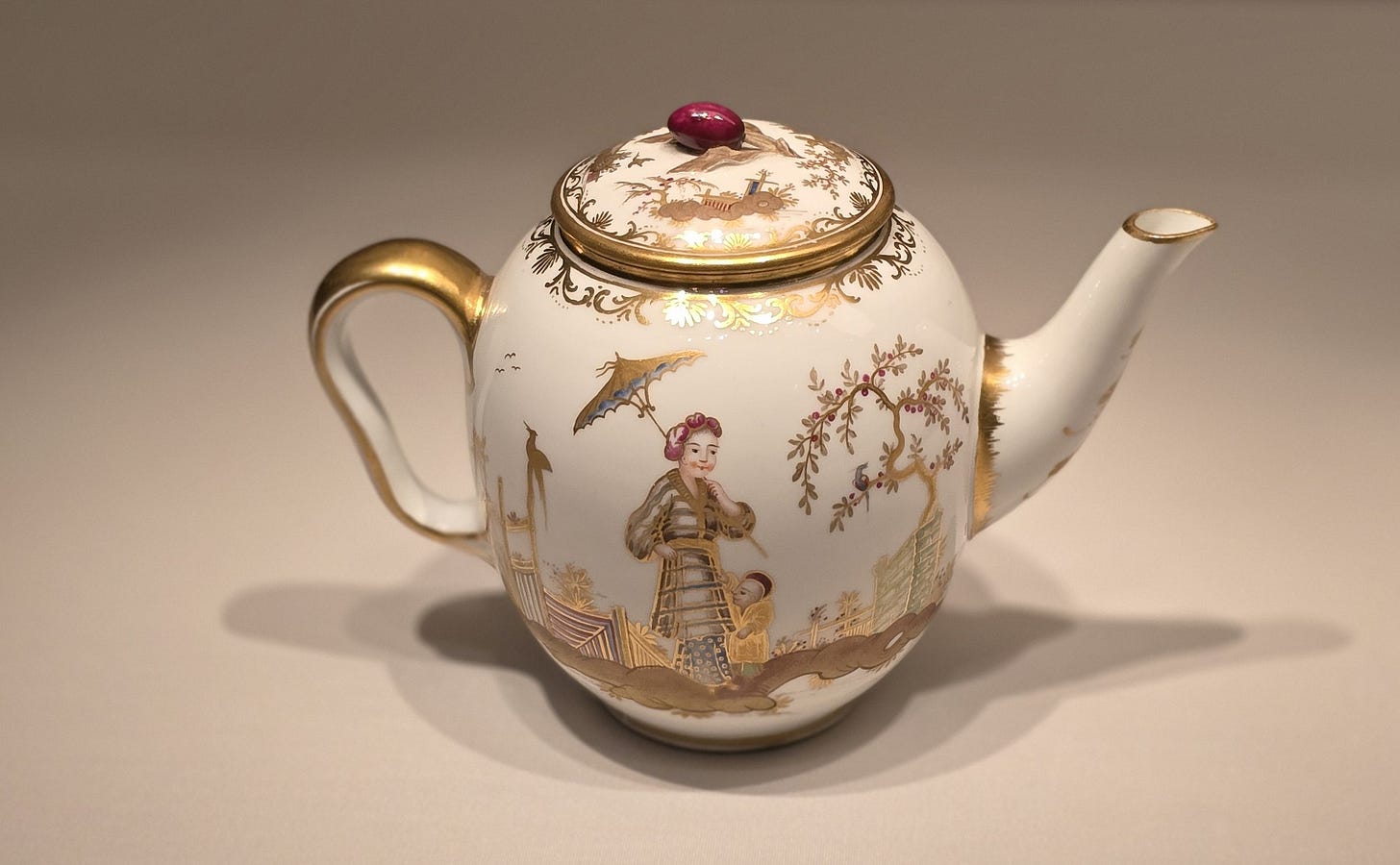
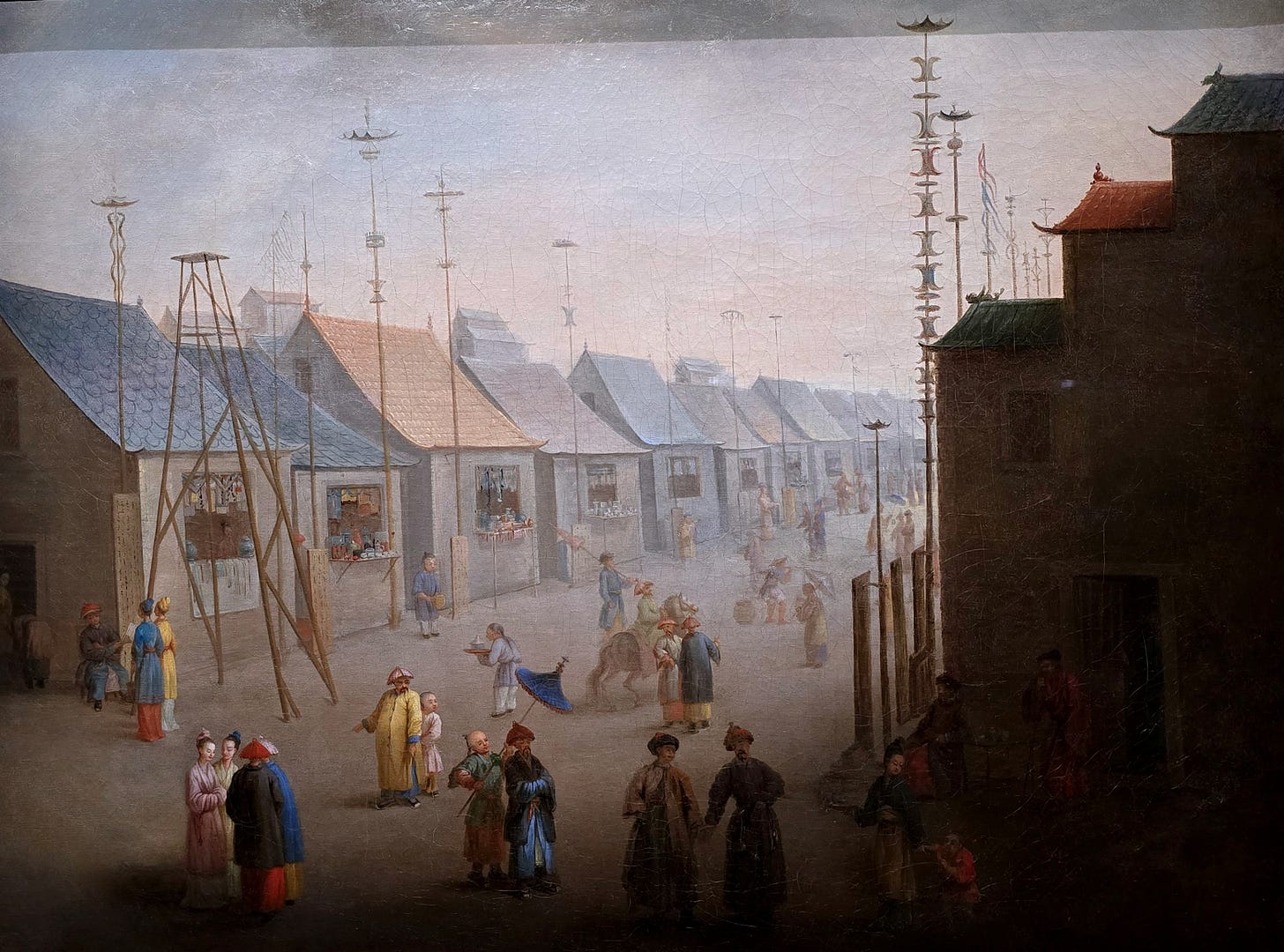
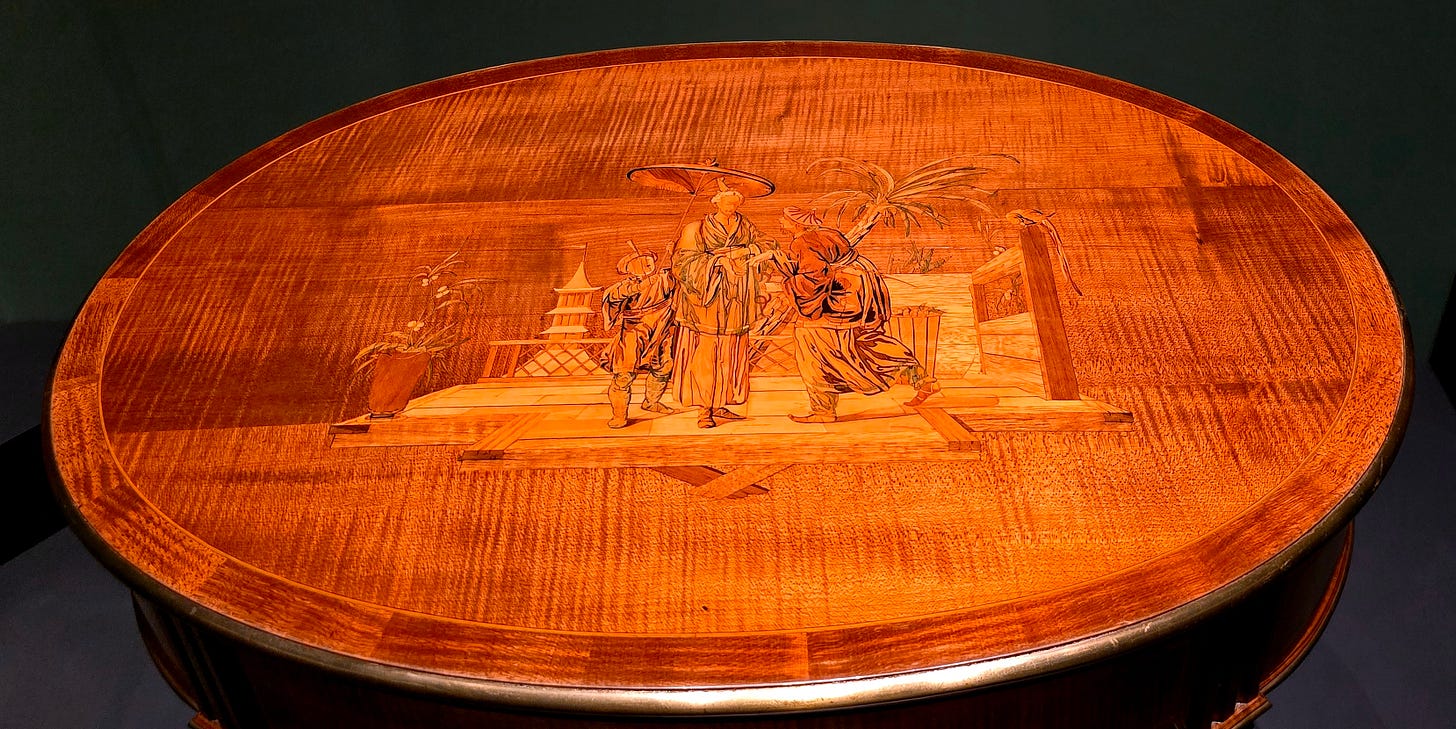
Jeffrey, Your gorgeous essay that says so much about the Qing court, the exquisite panels—and Voltaire— reminds me of the Jakuchū exhibit I had the honor to cover when working as a journalist. If you'll allow a link, here is that essay that I think pairs well with yours: https://innerlifecollaborative.substack.com/p/fleeting-cherry-blossoms-and-transformative
xx ~Mary
I had no idea, so this was incredibly fun and enlightening. It fired off my imagination, dreaming of a movie or series (or book!) where these two countries and their people meet in high court ~ the romance, admiration, and intrigue!